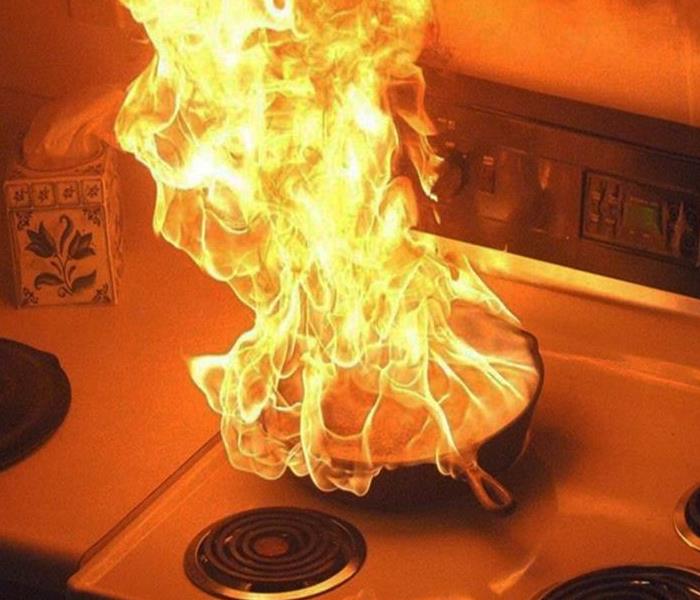Cooking Fire Safety: NFPA
3/1/2019 (Permalink)
Cooking fires can be dangerous and quickly get out of control. Please see these valuable cooking safety tips and statistics provided by the National Fire Protection Association (NFPA).
What you should know about home cooking safety
- Be on alert! If you are sleepy or have consumed alcohol, don’t use the stove or stovetop.
- Stay in the kitchen while you are frying, grilling, boiling, or broiling food.
- If you are simmering, baking, or roasting food, check it regularly, remain in the kitchen while food is cooking, and use a timer to remind you that you are cooking.
- Keep anything that can catch fire — oven mitts, wooden utensils, food packaging, towels or curtains — away from your stovetop.
If you have a cooking fire
- Just get out! When you leave, close the door behind you to help contain the fire.
- Call 9-1-1 or the local emergency number after you leave.
- If you try to fight the fire, be sure others are getting out and you have a clear way out.
- Keep a lid nearby when you’re cooking to smother small grease fires. Smother the fire by sliding the lid over the pan and turn off the stovetop. Leave the pan covered until it is completely cooled.
- For an oven fire, turn off the heat and keep the door closed.
Cooking fires by the numbers
- Based on 2012-2016 annual averages:
- Cooking equipment is the leading cause of home* fires and fire injuries, causing 48% of home fires that resulted in 21% of the home fire deaths and 45% of the injuries.
- Two-thirds (66%) of home cooking fires start with the ignition of food or other cooking materials.
- Clothing is the item first ignited in less than 1% of these fires, but clothing ignitions lead to 15% of the home cooking equipment fire deaths.
- Ranges or cooktops account for almost two-thirds (63%) of home cooking fire incidents.
- Unattended equipment is a factor in one-third (32%) of reported home cooking fires and half (45%) of the associated deaths.
- Frying dominates the cooking fire problem.
- Thanksgiving is the peak day for home cooking fires, followed by Christmas Day and Christmas Eve.
Safety considerations for cooking with oil
- Sources: NFPA's Home Cooking Fires and Home Structure Fires reports. * Homes include one- and two-family homes, apartments (regardless of ownership), and manufactured housing.
- Always stay in the kitchen when frying on the stovetop.
- Keep an eye on what you fry. If you see wisps of smoke or the oil smells, immediately turn off the burner and/or carefully remove the pan from the burner. Smoke is a danger sign that the oil is too hot.
- Heat the oil slowly to the temperature you need for frying or sautéing.
- Add food gently to the pot or pan so the oil does not splatter.
- Always cook with a lid beside your pan. If you have a fire, slide the lid over the pan and turn off the burner. Do not remove the cover because the fire could start again. Let the pan cool for a long time. Never throw water or use a fire extinguisher on the fire.
- If the fire does not go out or you don’t feel comfortable sliding a lid over the pan, get everyone out of your home. Call the fire department from outside.
When the fire is out and your family is safe, it is time for cleanup to begin. Please contact our office for a FREE estimate to restore your property and belongings. 607-722-2262.
*Information from NFPA*





 24/7 Emergency Service
24/7 Emergency Service
